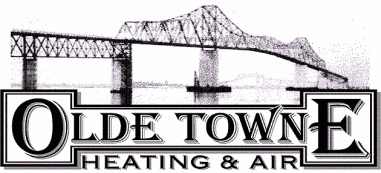
A furnace is usually a background player for your home, keeping you warm across the cold winter months. It regularly doesn’t get noticed until a malfunction appears.
One cause could be that your furnace has a cracked heat exchanger. It can potentially be hazardous, so it’s worthwhile to familiarize yourself with the symptoms of a cracked heat exchanger and what you can do if you believe that is the problem.
What Is a Heat Exchanger in a Furnace?
A heat exchanger transfers heat from the combustion chamber of your furnace to the air that flows throughout the air ducts. It typically handles this using coils or tubes that heat up the air while serving as a barrier to keep the gasses created in the combustion chamber, called flue gasses, from leaking out into your home.
Is a Cracked Heat Exchanger Dangerous?
Thanks to its key role, it’s no surprise that a damaged heat exchanger can be very dangerous. A crack in the heat exchanger can allow dangerous gasses – like carbon monoxide, which can be lethal – to flow across your home.
For obvious reasons, never run your furnace if you believe it has a cracked heat exchanger, as this could make the entire household sick. Reach out to an HVAC professional as soon as possible if you think your heating has a cracked heat exchanger that needs to be repaired.
Four Signs of a Cracked Heat Exchanger:
- Furnace switches off: A crack in your heat exchanger may cause your furnace to switch off.
- Odd Smells: If the air leaving your furnace has a powerful chemical odor, it might be a sign gasses are leaking through cracks in your heat exchanger. These byproducts, which will often smell like formaldehyde, are a significant warning sign.
- Carbon monoxide alarm is triggered or you feel poisoning symptoms: If a cracked heat exchanger is releasing carbon monoxide in your home, your carbon monoxide alarm may go off or household members could experience signs of carbon monoxide poisoning. Side effects include headaches, dizziness, weakness, nausea, vomiting or feeling drowsy. If your alarm goes off or you feel unusually tired, leave the home immediately and then call for help.
- Soot: If you see black sooty buildup around the exterior of your furnace, it’s an indication something could be seriously wrong.
What You Should Do if Your Furnace Heat Exchanger is Cracked
If you suspect your furnace has a cracked heat exchanger, contact a professional experienced in furnace installation Mount Pleasant right away so they can examine your system and, if required, perform a furnace heat exchanger replacement. Costs often fluctuate depending on the situation, but estimates can roughly suggest $1,000 to $3,000.
However, the good news is that heat exchangers are generally protected by the warranty. It's a good idea to check the warranty paperwork on your furnace, as while the warranty won't always cover the entire cost of repairs, it still may significantly reduce your bill.
How to Prevent a Cracked Heat Exchanger in Your Home
One of the easiest ways to prevent a problem in your furnace overall is with regular furnace maintenance. Furnaces offer the most benefits when they run efficiently. Calling a skilled professional to check your furnace for old parts, dirty filters and other potential problems can keep you from getting a big bill later on.
It’s also a good idea to take a look at your furnace filters every few months – it’s recommended some filters be changed every 90 days or sooner if they are dirty or grimy. While the filters aren't connected to the heat exchanger itself, the strain of drawing air through a clogged filter makes the entire furnace work longer to do its job. And the harder your furnace has to work, the more wear and tear pieces like the heat exchanger will experience.
